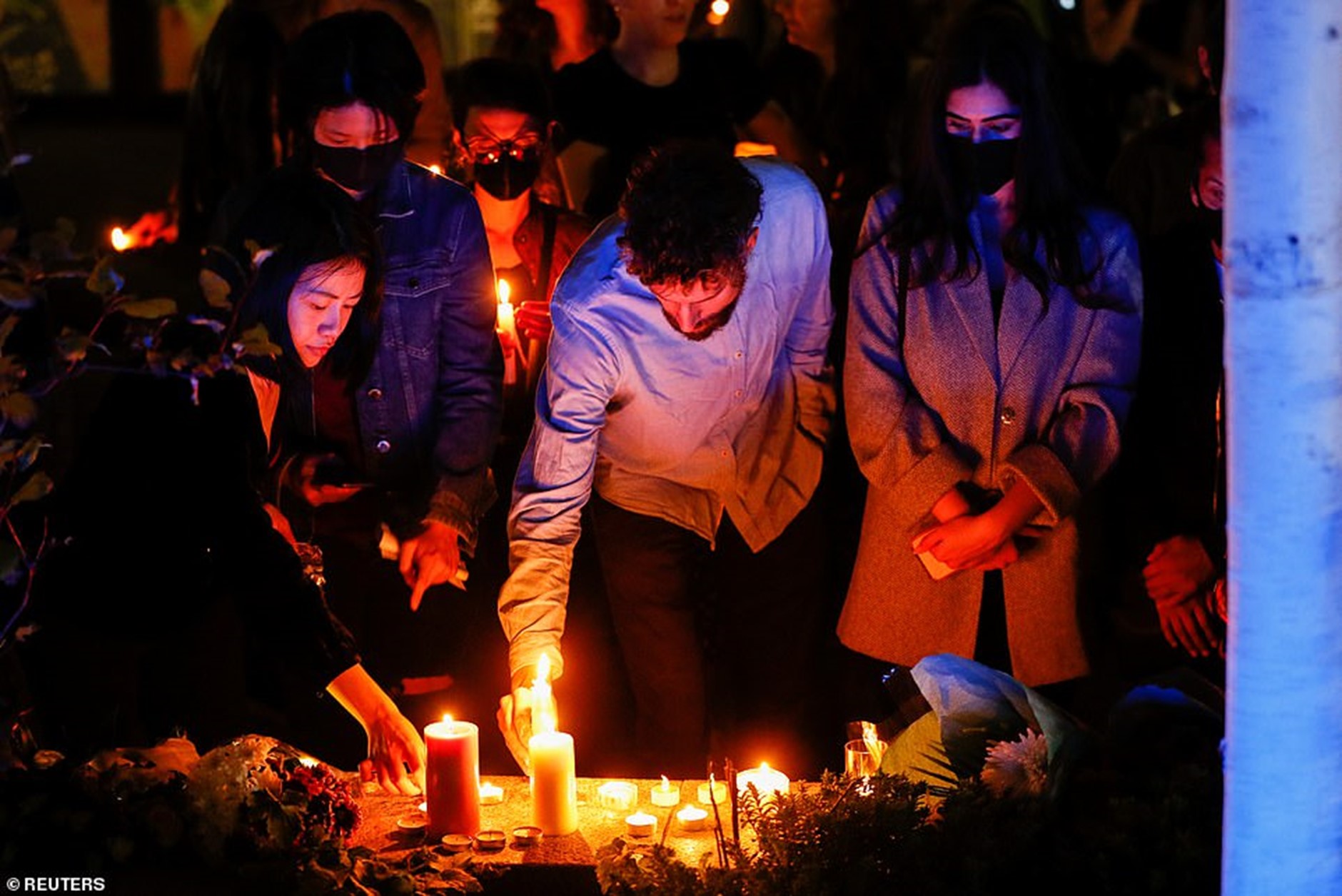The other morning, I was having a conversation with my friend, who is a man, about his night out at a club in the U.K. He had had great fun and, when the club closed, made the decision to walk home as he didn’t want to pay for a taxi. This was around 3 o’clock in the morning and was an hour-long walk.
Now, I am not saying the decision that he made to walk home was a sensible one; but, while talking to him I realised that as a young woman the thought of walking home, in the dark, alone, just wouldn’t have been a viable option without extreme fear that I might be kidnapped, assaulted raped or killed. Upon further reflection, I realised that although I was scared as a woman, as a white woman I had less to fear than a woman of colour.
As all these thoughts flooded my brain, one thing that came to mind was, this was wrong.
Women shouldn’t have to be scared walking home alone in the dark. No matter what the time is, what they are wearing, whether they are intoxicated – women should feel safe.
Sadly, this isn’t the case. Around the world, women experience disproportionate levels of Sexual and Gender-Based Violence (SGBV). Between international women’s day last year and international women’s day this year, 180 women have been murdered by men across the UK (here). This is significant of an epidemic of Sexual and Gender-Based Violence plaguing the world. In sex education navigation of safe, consensual sex is continuously deprioritised. As a result, individuals are at a disadvantage with little knowledge on how to enact safe sexual encounters, voice what they want and say no to what they don’t want. Therefore, as with many countries around the world, India is currently experiencing a rape epidemic with an average of 87 cases reported daily, in America 81% of women and 43% of men experience some form of sexual harassment in their lifetime (Chatterjee, 2018), and in South Africa in 2018/19 there were 49,020 rape and sexual assault cases recorded (The Citizen, 2019). This is also an intersectional issue: sexual assault, violence, harassment, and kidnappings disproportionately impact women of colour as their cases go unreported and unsolved the majority of the time (Dixon, 2020) and the LGBTQ community face higher rates of marginalisation, putting them at greater risk of sexual assault (Human Rights Campaign, 2021).
Just months after the wave of sadness, anger and despair that came with the Sarah Everard murder in the U.K, on the 18th of September 28-year-old teacher Sabina Ness was murdered by a man after she walked through a London Park. This has been met by calls from campaigners that ‘male violence is killing us. It is restricting our right to be free and equal citizens’ (here). In an article in the evening standard, top police officers stated that they were emphasising that they would not be asking women to change their behaviour to address violence against women. We agree, but it is clear that something needs to change to stop this epidemic of SGBV.
Currently, emphasis is placed on the prevention of SGBV. This is important however, this dominant approach is embedded in deep narratives of fear and harm, so positive aspects of sex such as sexual pleasure and an open and honest discussion of sex are primarily absent. Academics have outlined that there is little evidence that shows that the risk-focused, fear-based, approach which excludes discussion of sex-positivity and pleasure, leads to sustained safer sexual behaviours or improved wellbeing (Ford et al, 2019). It is implied that the framing of sex as a sanitised, emotionally neutral, dangerous act leads to an inability of individuals to be comfortable discussing sex, negotiating use of condoms, enacting safe, good sex or building healthy relationships (Higgins and Hirsch, 2007). An argument that was recently presented in my blog post in response to the Sarah Everard murder which focused on ‘why pleasure should be part of the solution’:
“Sex education, in the UK and around the world, needs to no longer be approached in a negative light, but in a positive, empowering environment that focuses on good safe sex. Emphasising teachings on consent, respect, how to communicate what you want with a partner and overall, how to achieve positive sexual relationships. So, people feel empowered to not only say no but to also communicate how they feel and what they want in a respectful, consensual way. The inclusion of sexual pleasure to create a sex-positive environment when learning about comprehensive sex education has been identified as something extremely important for individual health and wellbeing (Gruskin et al., 2019).”
But as we write another blog post trying to inspire a pleasure-positive solution to SGBV, we have something else to bring to the conversation: the pleasure principles.
A pleasure-based approach encourages the uptake of contraception, empowers people to make their own choices about their sexual behaviours and champions consent and healthy relationships. The 7 Pleasure Principles are a tool designed to act as a guide and inspiration to support people and organisations to embark on the journey towards a sex-positive, pleasure-based approach to sexual health.
We believe one of the key tools to addressing SGBV is changing the narrative around sexual health and relationships, from one that is shrouded in fear and shame, to one which is positive, empowering and teaches individuals how to have good, safe, consensual relationships. I want to emphasize two of the pleasure principles to highlight how they fit into this dialogue of why pleasure should be part of the solution:
Rights First

Sexual rights are the building blocks of pleasure-based sex.
This recognition of sexual rights as a form of human rights was recognised in the World Association of Sexual Health’s (WAS) declaration of sexual rights. This declaration recognises the right of individuals to control and decide freely on matters related to their sexuality and their bodies, the right of access to sexual and reproductive health services and the highest standard of sexual health (WAS, 2014). There is a strong argument that positive interactions between the trinity of sexual health, sexual rights and sexual pleasure can positively impact the sexual experiences, autonomy and wellbeing of people everywhere (Gurskin et al, 2019). Being positive about sexuality, sexual desire and pleasure can be utilised to overcome harmful socio-cultural norms that prevent discussions of sex, sex positivity or sexual pleasure perpetuating a culture of SGBV (Singh et al, 2020).
Talk Sexy

Pleasure positive messaging communicates positively and effectively. Adopt pleasure-inclusive language and imagery.
Promoting dialogues on sex that are positive and celebrative, people can be taught about their right to achieve pleasure and safe sexual experiences free from STIs, pregnancy risk, violence, and coercion (Singh and Philpott, 20 2019). A pleasure-based approach that focuses on consensual and respectful sexual relationships teaches every individual, not just women, how to communicate not only what they don’t want, but what they want in a sexual relationship (Singh et al, 2019).
Adopting a pleasure-based approach through the incorporation of the Pleasure Principles can allow CSE to evolve into something which is sex-positive, pleasure inclusive and empowers individuals to enact safe, consensual, happy healthy relationships.
Conversations like this can be very disheartening. Honestly, it took me a while to get through this post as I kept needing to stop to take a breath because, especially as a woman, this dialogue can be very overwhelming. So, remember to Love Yourself: to build a pleasure-inclusive world, love yourself and have kindness for yourself and others. Don’t blame yourself for the violent behaviour of others – as the old slogan says, ‘Take Back the Night’. We have the power to ignite pleasure positive change, building the pleasure wave together.
Please let us know what you think of our Pleasure Principles and how we can both make the world a safer place for women whilst working towards more safe good sex in the world.


